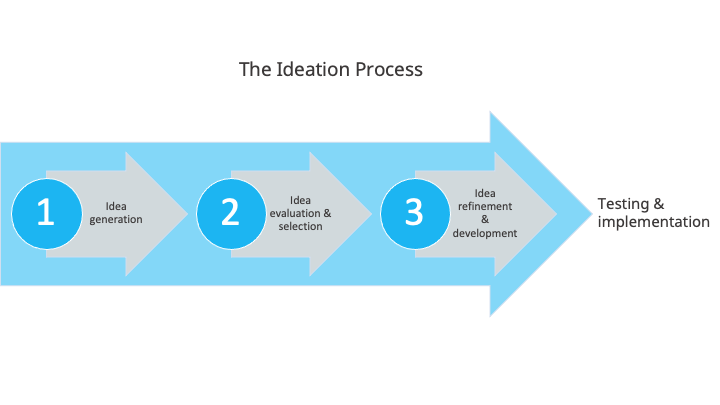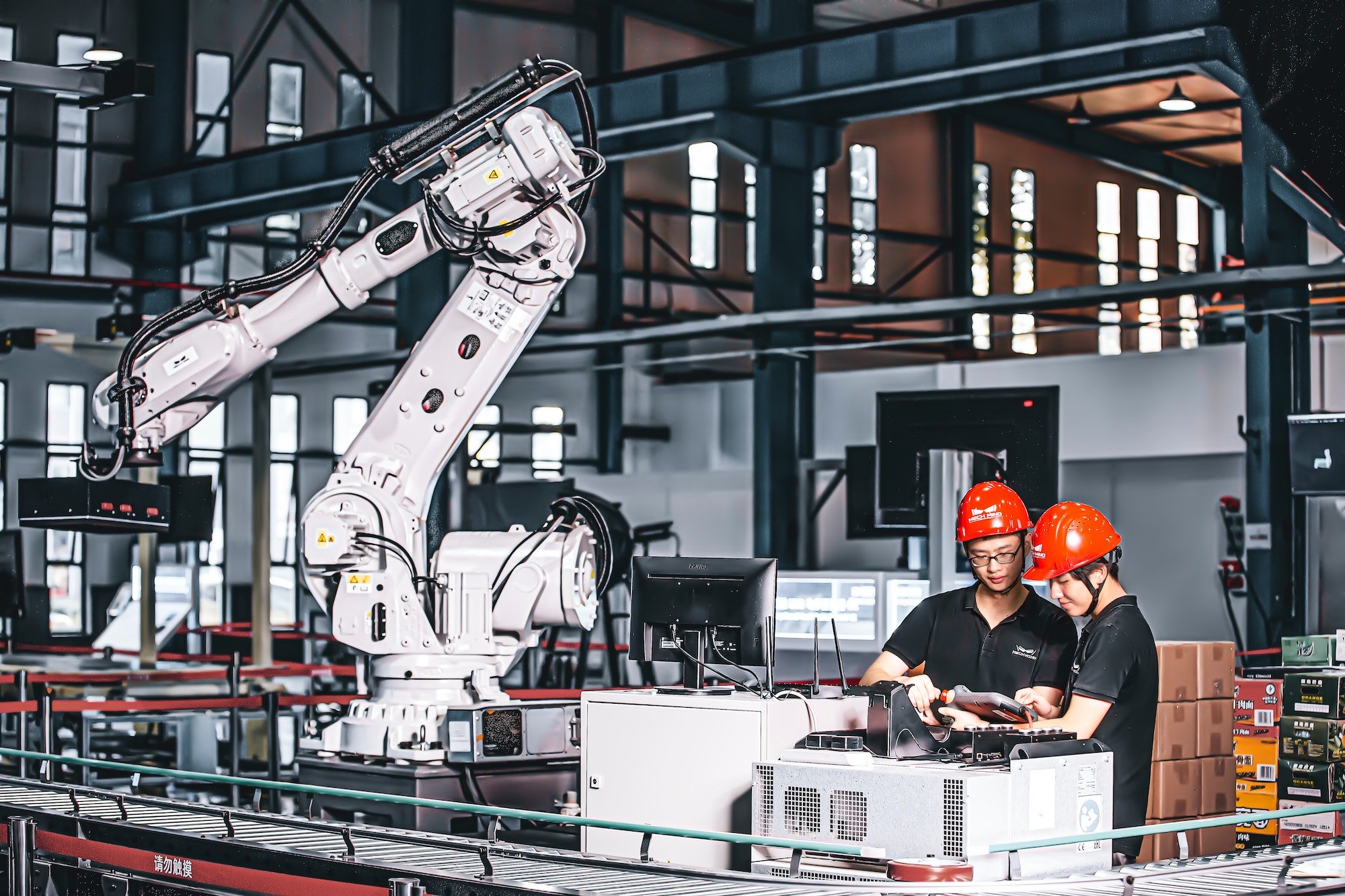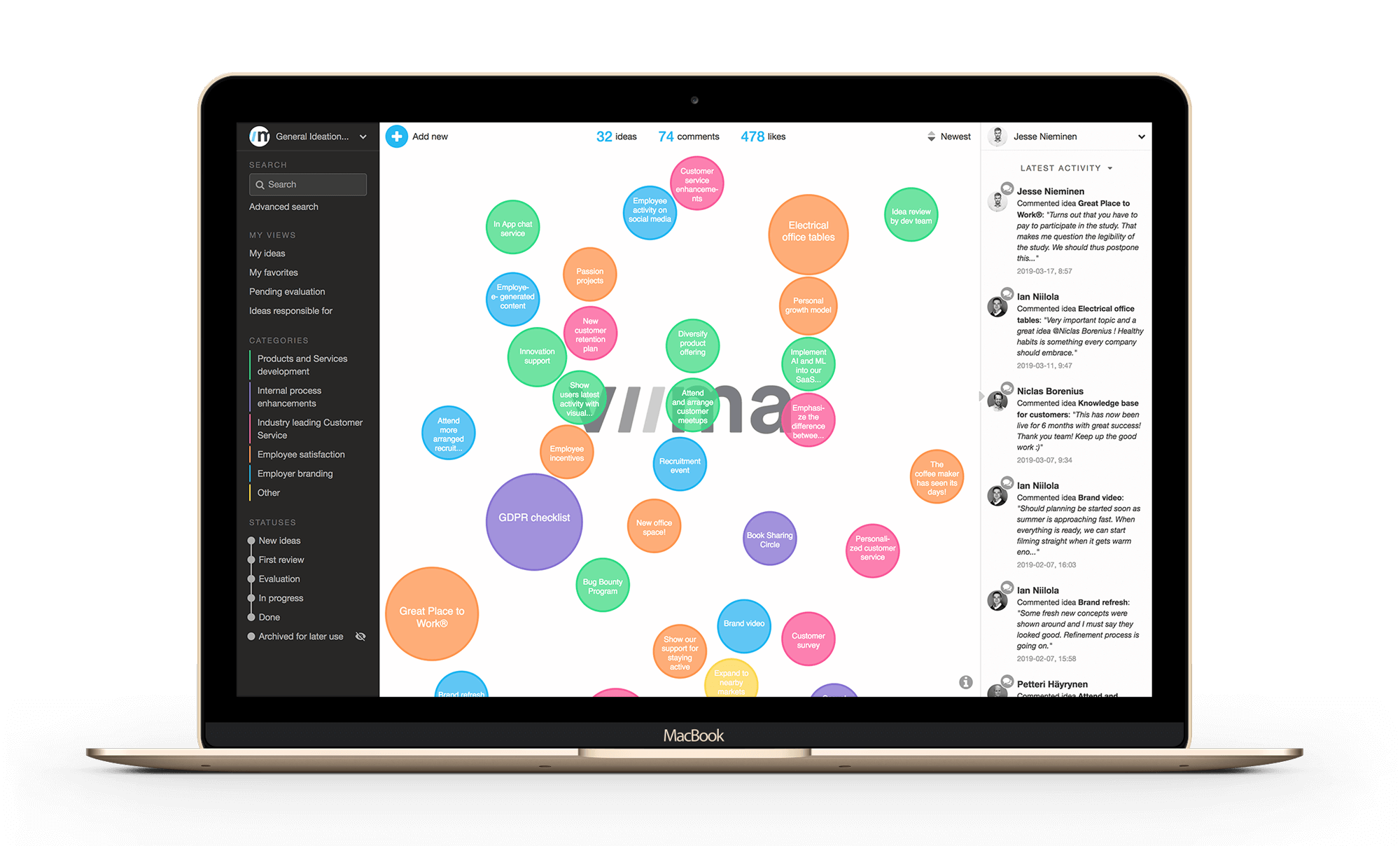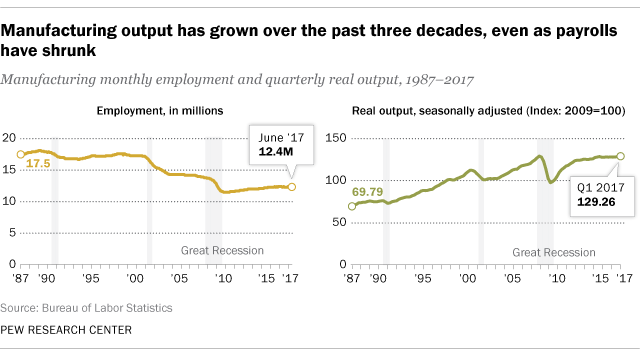How to Collect Ideas From Frontline Employees
Due to the COVID-19 pandemic, for the past two years, frontline employees have made headlines in all media outlets. While often left out of important conversations, their essential role in society, and therefore in organizations, has now been acknowledged and discussed more widely.
The value of frontline workers, their input, and ideas are indisputable. However, it’s still open for debate in organizations across the globe, how to best harness their tacit knowledge, know-how, and creativity.
In this article we’ll provide some practical suggestions on how to go about this. From how to collect ideas systematically, to engaging your employees in ideation, these tips can help you spot new opportunities to innovate.
So, without further ado, let’s get to it.

Table of contents
Who are frontline employees and what’s their role in innovation?
The term “blue collar worker” is still commonly used, but we prefer using frontline employees to also include those who are the main point of contact for a business, who might or might not work at a desk, and might be using smart devices for internal communication or not. We’ve also found the term blue collar gets a derogatory meaning in certain circumstances, and it doesn’t necessarily reflect the realities of modern society.
For instance, in our post-industrial society, the line between blue collar and white-collar workers has blurred and the distinction between the two is now mostly visible in the company’s structure, with frontline workers being usually lower on the org chart.
Even more, we can see today that the manufacturing employment has steadily declined due to the advancement in technology and automation. In the 70’s, US workforce had 25% labour workers compared to 10% today. Even so, productivity has steadily increased.
Be that as it may, frontline employees are present in all industries, in both public and private sectors and they are at the base of any well-functioning organization, and society. The headlines in the past 2 years talked mostly about the frontline workers in the healthcare and hospitality industries, but they are also found in production, construction, retail, and even most technology companies etc.
Now, why is their role essential not only for the well-functioning of an organization, but also for innovation? In short, you can’t have innovation just at the top. Innovation fuels the growth and development of products, services, business models and strategies etc.
To be successful in such complex environments you need to scale innovation. Scaling innovation is a big topic, but to put things in perspective, it refers to expanding the presence and the use of innovation in order to maximize its impact in an organization.
Yet, many executives still have the incorrect assumption that innovation is reserved to specific departments or roles. They seem to forget that including frontline employees in their innovation process brings many important benefits in the long term. What benefits you might ask? Let’s go through some of the most important ones.
Why include frontline employees in ideation?
The input of frontline employees can impact the bottom line, as well as the culture of an organization. Here’s the how and the why:
- Front line employees, as the term indicates, are usually the first point of contact with customers, whether that happens face-to-face, online or by phone. This gives them a better sense of core issues that customers are facing on a daily basis, and how to solve them.
On the other hand, managers and leaders are mostly occupied with high level operations and tackle many things at the same time. So, it’s easy to get disconnected from what is really happening on the ground. - The insights they gain from their everyday work isn’t useful just to identify issues, but also to come up with suggestions for continuous improvements. For example, they can suggest how to reduce inefficiency in a process or identify the sources of it. When the employees have direct contact with customers, they can also provide valuable information on how to improve the customer experience.
- Frontline employees can also provide valuable information about shifts and trends in the market. When a big shift is taking place, it will take years for it to show up in the financials that top management is primarily dealing with. To avoid being the last to the party, “keep an ear to the ground”.
- It’s not uncommon for senior management to come up with ideas, plans and changes that look good on paper, but might cause a lot of confusion or waste on the frontlines. By asking the input of frontline employees you might avoid wasting time, money and other resources that could be used somewhere else.
- Last, but not least, constant communication with frontline employees leads to a more open, transparent and innovative culture where employees feel empowered. This increases employee engagement, which in turn positively impacts the retention and turnover rates. Sometimes employees might worry that don't know how to sell their ideas internally. But constant, transparent communication reinforces a culture of innovation and helps them feel more comfortable to communicate.
How to collect ideas and encourage innovative thinking
Even though many organizations are already aware of all the benefits of collecting ideas, feedback and suggestions from their frontline employees, they don’t know how to best go about it. Truth be told, it’s easier said than done. When you have hundreds, or thousands of employees, things can easily get complicated, and managers need to put some thought and effort in the process.
Because we discuss the need for a systematic approach, we have to emphasize the importance of an idea management process. As we like to remind you from time to time, ideas are not worth much unless they are managed, developed and implemented. 
So, first and foremost, you need to define your idea management process, assign responsibilities and roles for those accountable for the progress of the ideas, and set clear rules that are understood by everyone.
A well-functioning idea management process is the cornerstone for any ideation, whether it’s a one-time campaign or an ongoing thing. Creating a process to manage ideas means to keep everyone in the loop, because few things kill employee motivation like leaving them in the dark, after they gave their input.
Assuming you’ve taken care of this, let’s have a look at some key elements to consider when engaging frontline employees in ideation, as well as some tools that can help you do just that.
An employee-driven innovation approach acknowledges that the innovation potential and capabilities are distributed throughout the whole organization and are not assigned solely to an R&D department. On the other hand, employee-driven initiatives don’t exist on their own. They are influenced by the activity of management, by colleagues and the organization at large.
Thus, we can look at is as an entire ecosystem that, when organized and managed well, can add value and lead to more innovation. Choosing what to focus on, frontline employees’ input, or an R&D department, comes down to the types of innovations you are after. Companies that innovate successfully have a portfolio that includes various innovations, from incremental to disruptive ones.
Even though frontline employees don’t have the time, resources or know-how to implement disruptive innovations, it doesn’t mean they can’t have a contribution. While usually disruptive innovations are best handled in other parts of the organization, having insights into market trends, and problems customers are facing can also turn into great assets for these types of innovations.
On the other hand, all the insights provided by frontline employees add up to all those incremental improvements that bring value. Management decides if they want to harness frontline employees’ insights to their advantage or lose that potential.
Generally speaking, employee-driven innovation is a bottom-up approach, which means that solutions and ideas come from frontline workers. However, there’s also a mix of bottom-up and top-down that can work well. In this case the problem or opportunity to focus on first is defined at the top, but the input comes from the bottom.
In both scenarios, management has to empower and motivate employees, give them the power and responsibility to implement their ideas.
Management has to empower and motivate employees, give them the power and responsibility to implement their ideas.
At the other end of the spectrum, a hierarchical organization with purely top-down management, is likely to lead to disengaged employees. Again, a conscious effort, processes and shift in mindset are important. Without these, senior managers are easily caught up in operational work and lose sight of the realities frontline employees deal with.
Tools to help you collect ideas from frontline employees
As recently mentioned, the input of frontline employees can contribute to both disruptive and incremental innovations. Next, we’ll go through some of the methods and tools you can use to harness the collective knowledge of your frontline employees.
Unless you’re already systematically driving results from frontline employees’ ideas, these tools and techniques can get you started with incremental improvements and innovations. However, some of them can just as well be used to get input that leads to bigger innovations, once you have the right processes in place.
Kaizen corner
We previously talked about Kaizen and other continuous improvement processes and that’s where the Kaizen corner idea comes from too. As a short reminder, Kaizen, the building block of lean thinking and methods, is a set of standardized methods of improving overall business by increasing efficiency and eliminating waste.
A Kaizen corner is traditionally a physical place where employees can submit ideas and improvement suggestions. Even though this might be a bit outdated today, it can still work in environment where employees don’t have access to online devices to submit their ideas.
For a Kaizen corner to work (be that on a platform accessible to everyone or in another form) the ideas must be reviewed and evaluated, and the feedback and decisions need to be communicated back to employees quickly.
This is of course much easier with a digital platform, than it is with the traditional suggestion box. Employees should also be trained and taught how the process works, what their role is and why it’s important. Then, try to implement as many ideas as possible and reward employees. It will help increase the participation and engagement rates.
Gemba walks
Derived from the Japanese manufacturing industry, like Kaizen, the Gemba walks were popular in factories and plants where frontline employees didn’t have access to other means of communication with management and vice versa.
The idea behind this technique is to have unscripted and unplanned visits on the floor during which management observes the processes and work and chats with employees to get to know them and their work.
 The goal is not to point out at mistakes or scare employees, but to use it primarily as a learning experience, and also to show that management cares about what’s happening on the frontlines. After the walk managers reflect on what they saw and try to cooperate with employees to fix and improve specific things.
The goal is not to point out at mistakes or scare employees, but to use it primarily as a learning experience, and also to show that management cares about what’s happening on the frontlines. After the walk managers reflect on what they saw and try to cooperate with employees to fix and improve specific things.
Collaboration tools
Collaboration tools are indispensable nowadays, even more so for the past two years. Tools like Trello, Slack, Microsoft Teams and so on, they all facilitate communication in organizations of all sizes and allow for exchange of information and ideas.
When it comes to frontline employees, collaboration tools are useful because they don’t require access to complex devices. For simple communication and feedback some of these can simply be used on phones. However, even though they are not the most systematic way of gathering ideas, they can still be useful to organize, track and manage different projects on a small scale.
Idea management tools
If you want to implement an ideation process at a larger scale, manage ideas better and create an innovation process, you should go with an idea management tool. There are many options available, and it all comes down to the features and characteristics that meet your needs.
We’re obviously biased, but our recommendation would be Viima. From collecting ideas, to creating your own ideation process, monitoring the progress, evaluating and selecting the best ideas, Viima gives you all you need to manage innovation.
Even more, you can also download the easy-to-use mobile app that frontline employees can use anywhere. The best part is that it’s free for unlimited users so you can try it out today!
 However, keep in mind that even with the best tools and methods, you most likely won’t get to a 90%-100% participation rate. A good participation rate in ideation varies considerably from one organization to the next. That’s why it’s important to set goals and expectations as part of your organization’s strategy and to make ideation part of a holistic approach to innovation.
However, keep in mind that even with the best tools and methods, you most likely won’t get to a 90%-100% participation rate. A good participation rate in ideation varies considerably from one organization to the next. That’s why it’s important to set goals and expectations as part of your organization’s strategy and to make ideation part of a holistic approach to innovation.
Keeping frontline employees engaged in ideation
Now that you have a better idea of how to collect ideas and feedback from frontline employees, you should also know how to turn it into an ongoing successful approach. If you want to see lasting results, you need to keep everyone engaged and motivated. Let’s see how to do that:
- Offer incentives and rewards
The most common way of rewarding people or participation is through different rewards, financial or in different form. However, keep in mind that the financial rewards are not always the best way to go about it. We already covered this topic in detail, but to keep it short, giving solely monetary incentives is a short-term approach.
In the long run, it is likely more difficult to keep people engaged and motivated without more meaningful rewards that tap into people’s intrinsic motivation.
- Acknowledge and recognize their work
When they feel appreciated and acknowledged, employees are more likely to express their creativity at work. On the contrary, they become cynical and lose interest if management creates a divisive company culture.
You can start showing your appreciation by responding to their ideas and feedback. Knowing that their ideas have been heard and taken into consideration or receiving feedback on why it was rejected, will also ensure a higher engagement and participation rate. If nothing happens with their input, they will lose interest and they won’t contribute next time.
- Be transparent with performance and metrics
People want to see and understand how they contribute to the business success. Sharing the data on performance, sales and metrics is a transparent way of encouraging employees and showing them how their work influences the bottom line. This also encourages proactive behaviour and a more innovative culture.
For example, a fast-food chain started to share simplified income statements with its employees. The workers were proactive and worked on improving the stats.
- Create an ownership culture
When companies ask more from employees, they, in return ask, “what’s in it for them”.
The solution that worked for many companies is the ESOP (employee stock ownership plan). In the US alone, there are thousands of companies owned by their workers through ESOP, and they employ about 11 million people.
Data shows that ESOP companies have an increased productivity of 4%-5% in the first year and they notice an increase in return on assets of 2.7 percentage points.
However, we know that this is not an option for all organizations, but using the same principles, you can find other ways of sharing the returns with employees that have contributed.
For example, some companies offer bonuses, paid holidays, or extra weeks of pay depending on targets that were hit or surpassed. The option that suits you best also depends on the culture you want to create. The ownership culture is a great way to keep engagement rates high. After all, this is why intrapreneurship has gained popularity in many large organizations.
Conclusion
There are a lot of things managers can do to include frontline staff in ideation and it all starts with the confidence and respect they show for their work. Collecting ideas and feedback from people throughout the organization is essential for the continuous improvement of all companies.
However, the results won’t show overnight and that doesn’t mean that it doesn’t work or that it’s not worth putting the effort. Perseverance is the key here. By cranking up one improvement after the other, slowly the culture will change, the customer experience will improve, and the operations will become more efficient.
Think on the long term and how it all adds up. If everyone works with the mindset of improving every week 1%, in 5 years’ time the company will be 13x better than it used to.
If you want to start collecting ideas, suggestions or feedback from frontline employees in a systematic, organized way, sign up for Viima! It’s free for unlimited number of users and gives you even more possibilities to improve and innovate.








